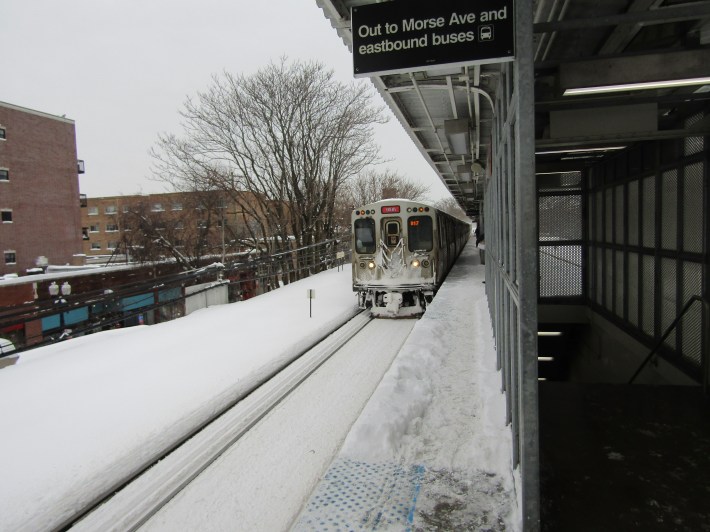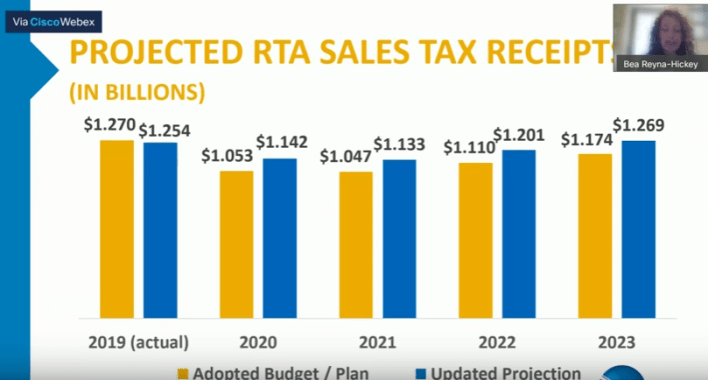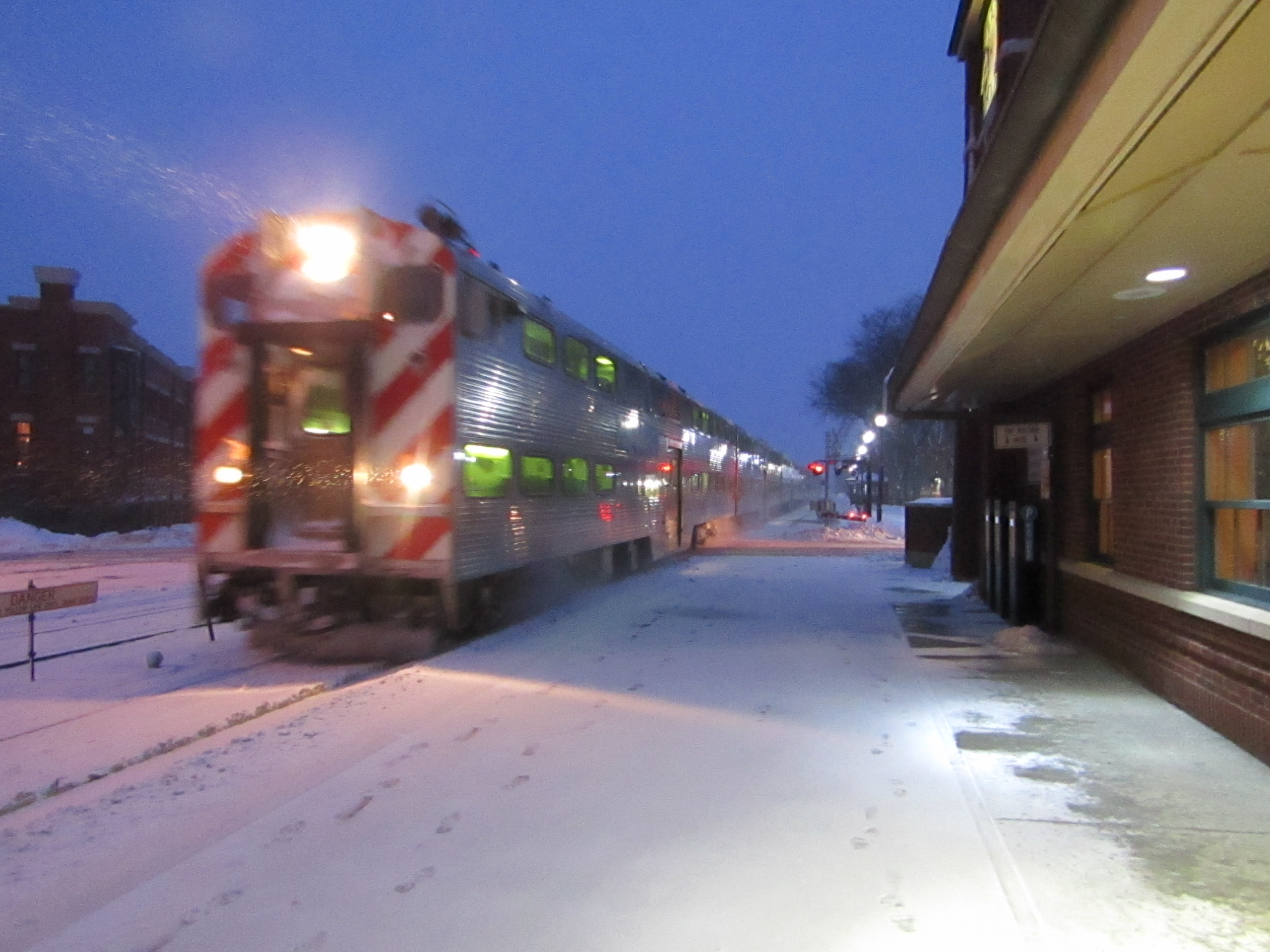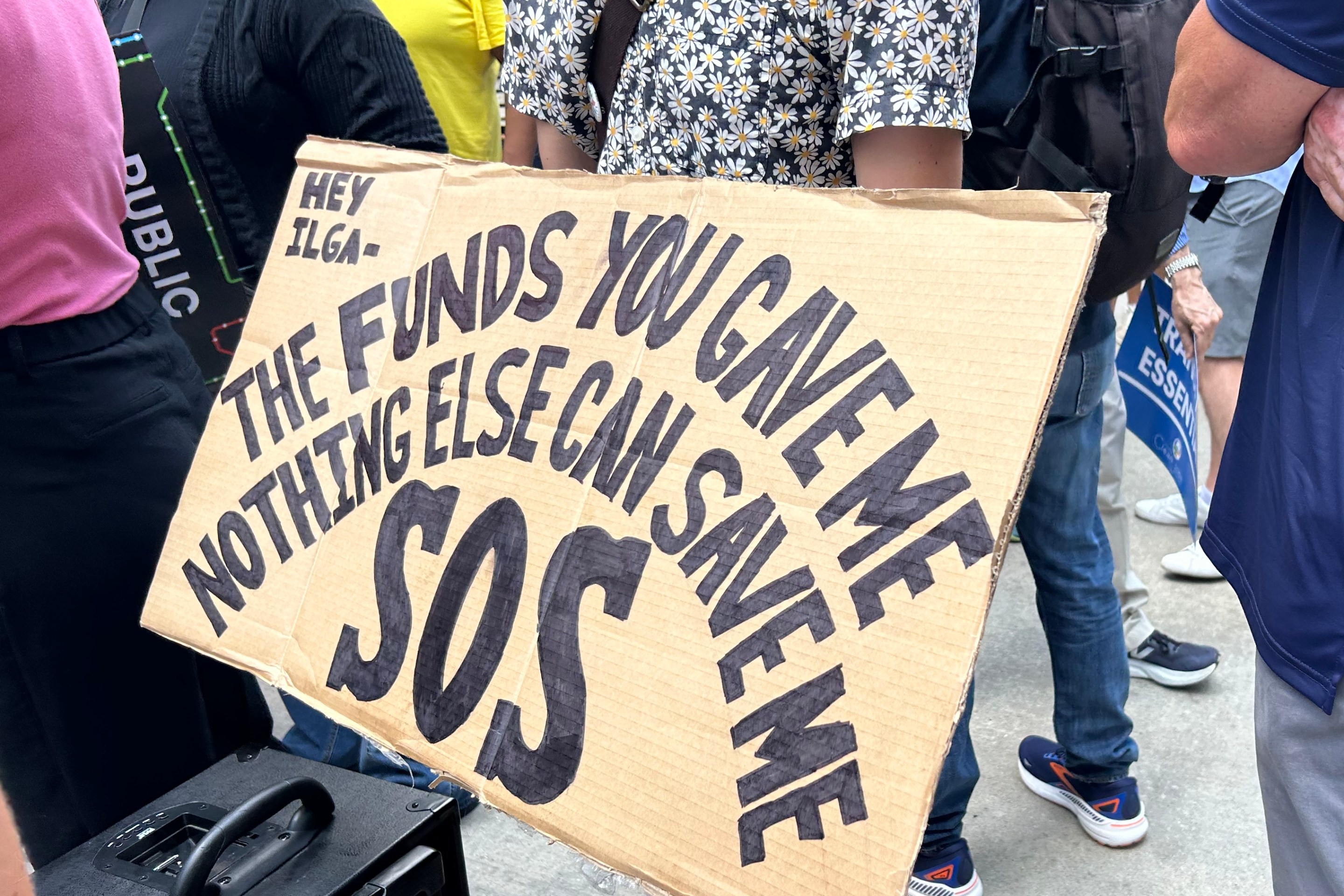The Regional Transportation Authority's framework for how it would divvy up federal stimulus funds for transit between the CTA, Metra and Pace, released last month, stated that it would focus the money on transit-dependent areas, favoring Chicago's South and West sides. So, when the RTA released the actual numbers during its February 18 board meeting, it was no surprise that, out of the roughly $486.2 million in total transit funding for Chicagoland, the CTA would get $361 million, while Metra would get only $83 million, and Pace would get $22 million for fixed-route bus service, plus $20 million for paratransit. It was also unsurprising that this allocation plan caused some backlash.
During Metra's board meeting on February 17, the railroad's directors accused the RTA of penalizing them for making the steepest service reductions and budget cuts of the three agencies, while rewarding the CTA, which basically did no service cuts. While Metra faces a smaller budget deficit than CTA, the directors argued that the $83 million wouldn’t be enough to allow for gradually increasing service levels as the pandemic subsides and workplaces reopen.

But the RTA wasn’t moved by that assertion, arguing that the RTA's formula ensures that resources would go to areas that need transit service the most right now, such as neighborhoods with a high number of essential workers who must show up to their jobs in person. The RTA officials emphasized that this formula would be strictly for the funds from the second stimulus package, and that the RTA hoped it would be able to send Metra more money if a third stimulus package passes.
After the meeting, the RTA released the plan for public comment. Comments must be submitted by March 5, and the RTA board will vote on whether to approve the allocations during its March 18 meeting.
The funding split
Back in November, all three transit agencies were facing looming deficits. The funding they had received earlier in the year through the Coronavirus Aid, Relief, and Economic Security (CARES) Act helped to fill the gap, but would only last so long. At the time, the CTA expected run out of funds in spring 2021, while Metra’s budget cliff loomed at the end of 2021, and Pace expected to be able to carry some of the funding into 2020.
Since then, Congress passed the Coronavirus Response and Relief Supplemental Appropriations Act, which, among other things, included about $486.2 million for the three transit agencies. On January 21, the RTA released a the plan for how the money would be split up. As I reported at the time, the agency identified Critical Needs Areas – census tracts with large numbers of transit-dependent riders. That included riders who need transit to get to work, riders who need who need public transportation to “access critical goods and services” and residents who work in fields that require them to show up for work in person.

Taking those factors together, CNAs include most of Chicago, as well as Joliet, Aurora, Elgin and Waukegan, significant portions of south suburban and west suburban Cook County, Evanston, and some smaller clusters in other suburbs.
The RTA found that 85 percent of Chicagoland transit services already fall within CNA census tracts. Out of that percentage, the CTA provides 77.5 percent of the service, while Metra provides 17.9 percent and Pace provides 4.6 percent.
During the February 18 RTA board meeting, Bea Reyna-Hickey, the RTA’s chief financial officer explained that, because paratransit saw higher ridership than projected, Pace’s expenses rose as well. She recommended giving Pace $20 million for paratransit services, and splitting up the rest according to the above percentages.
Reyna-Hickey added that the RTA also had higher-than-expected tax collections. However, the money that comes to the transit system via sales tax and other tax receipts is allocated based on statutorily dictated or pre-agreed to formulas.

Altogether, the RTA plans to give CTA $421 million, while Metra would get $116 million, and Pace would get $35 million.
Reyna-Hickley said that the funds would be enough to cover CTA’s current $372 million budget shortfall. But, for Metra, the situation would be trickier. Depending on how much of Metra's pre-pandemic service is restored, its budget shortfall could be anywhere between $70 million and $155 million.
Metra pushes back
Out of the three transit agencies, Metra made the most drastic service cuts, reinstating only a few trains back during the summer and fall, when the pandemic was in a lull. Pace suspended 73 routes and reduced service on 25 routes, The CTA didn’t make significant schedule changes – something that Dorval Carter, the agency’s president, previously said was deliberate to ensure that medical workers, other essential workers, and transit-dependent riders would be able to get to where they needed to.
During the February 17 Metra board meeting, Romayne Brown, the current board chair, said she was worried that the funding distribution would set the pattern for future RTA allocations. RTA executive director Leanne Redden said that this analysis was meant for this particular stimulus package alone, and that “This is absolutely not precedent-setting – this is the representation of the here and now.”
Several directors argued that the RTA’s analysis underestimated transit needs in the suburbs, with director Norman Carlson, who represents Lake County, specifically mentioning reverse-commuters. “I’m terribly disappointed in this report,” he said. “It’s biased against the suburbs, and I think you're missing critical elements, especially the costs of running those services.”
The directors also argued that Metra was punished for trying to keep the expenses down. “Our administrative team [has taken] extraordinary cost-cutting measures, to eliminate every nickel, every dime that we could,” said director Don De Graff, who represents south-suburban Cook County. “We don't want to get penalized for that. And my concern is that, for being responsible, for looking under very rock, we're being penalized.”
Director Ken Koehler, who represents McHenry County, and director Don Orseno, who represents Will County, also worried that without money to invest in already large backlog of aging bridges, rails, train cars and other infrastructure, Metra will struggle to recover. “We pulled back and we haven't done things. If we're going to continue on this path, we're going to put ourselves out of existence, because we're not going to make a comeback.”
Redden noted that Metra has enough CARES Act funding to last it through 2020 – leading the directors to argue that this was another way the RTA was penalizing them for being careful with their money. Thomas Farmer, Metra’s chief financial officer, said that, when the transit agency received CARES funding, they had no idea whether there would even be a second stimulus package, so they tried to stretch the cash as far as possible.
During the February 18 RTA board meeting, William Coulson, who represents suburban Cook County, said that he supported funding for CTA and Pace, but that he shared his Metra counterparts’ concerns about funding affecting future service restoration. Jill Leary, RTA”s deputy director of capital programming and planning, responded that, while it is a concern, they had to focus on what the transit agencies need right now.
It was a sentiment that most RTA directors agreed with. “I think we've discussed, many times for the past year, the need to provide support for critical transit service,” said director Pat Carey, who represents Lake County. “I think that the analysis being done on the CNAs is spot on and I support what comes out of that.”
Correction 2/23/21, 2:30 PM: This piece previously stated that Reyna-Hickey proposed giving the RTA's tax revenue surplus to the three transit agencies using the Critical Need Areas formula. However, the RTA has since informed Streetsblog that the money that comes to the transit system via sales tax and other tax receipts is allocated based on statutorily dictated or pre-agreed to formulas.





